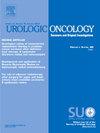睾丸癌医疗事故趋势
IF 2.4
3区 医学
Q3 ONCOLOGY
Urologic Oncology-seminars and Original Investigations
Pub Date : 2025-03-01
DOI:10.1016/j.urolonc.2024.12.080
引用次数: 0
摘要
在过去的50年里,睾丸癌的治疗取得了医学和外科的进步。实践标准的发展有望为患者提供生活质量和肿瘤预后方面的好处,但护理标准的变化可能会引入潜在的机会,增加对提供者的医疗事故索赔。我们试图评估频率和医疗事故索赔的原因,以及睾丸癌管理的时间趋势。方法利用谷歌学者判例法数据库(一个开放获取的州和联邦判例法以及初审法院案件数据库)对美国与睾丸癌医疗事故相关的诉讼进行评估。从1975年1月1日到2024年1月1日,完成了以下术语的查询:“睾丸癌”或“睾丸癌”和“医疗事故”。结果在最初筛选的102起诉讼中,排除重复和与睾丸癌患者医疗事故诉讼无关的病例后,确定了24例(图1)。大多数病例与诊断或治疗延误有关(n = 21,87.5%)。2例(8.3%)是由于放射治疗的并发症引起的,1例(4.2%)是由于睾丸癌诊断后保存精液标本的损失引起的(图2)。没有因监测实践或用于腹膜后淋巴结切除术的手术技术而提出的医疗事故索赔。涉及睾丸癌医疗事故案件的被告是最常见的医疗保健中心,包括退伍军人医院、监狱医疗保健系统、私立医院或医疗团体(n = 16.67%)。结论睾丸癌是医疗事故诉讼的主要原因,因此早期发现和诊断睾丸癌具有重要意义。重要的是,改变睾丸癌的管理以限制睾丸癌治疗的发病率并没有增加医疗事故索赔的风险。本文章由计算机程序翻译,如有差异,请以英文原文为准。
TESTICULAR CANCER MALPRACTICE TRENDS
Introduction
Medical and surgical advancements have been made in testicular cancer management over the past 50 years. The evolution of practice standards is expected to provide patients benefits in quality of life and oncologic outcomes, but changes in care standards can introduce potential opportunities for increased malpractice claims against providers. We seek to evaluate the frequency and causation of malpractice claims as well as temporal trends in testicular cancer management.
Methods
The Google Scholar Case Law database, an open access database of state and federal case law as well as trial court cases, was evaluated for litigation related to testicular cancer malpractice in the United States. A query of the following terms from January 1, 1975, to January 1, 2024, was completed: “testicular cancer” OR “testis cancer” AND “malpractice.”
Results
Of 102 lawsuits initially screened, 24 were identified after duplicates were excluded and cases irrelevant to malpractice litigation in testicular cancer patients (Figure 1). Most cases were related to delays in diagnosis or treatment (n = 21, 87.5%). Two cases (8.3%) were in response to complications from radiation treatment, and one case (4.2%) was a suit in response to the loss of semen specimen for fertility preservation after testicular cancer diagnosis (Figure 2). No malpractice claims were filed in response to surveillance practices or surgical techniques utilized for retroperitoneal lymph node dissection. Defendants involved in testicular cancer malpractice cases were most commonly healthcare centers, including VA hospitals, prison healthcare systems, private hospitals, or medical groups (n = 16, 67%).
Conclusions
The present study emphasizes the importance of early detection and diagnosis of testicular cancer, as this was the primary cause of malpractice lawsuits. Importantly, changes in the management of testicular cancer to limit the morbidity of testicular cancer treatment have not increased the risk of malpractice claims.
求助全文
通过发布文献求助,成功后即可免费获取论文全文。
去求助
来源期刊
CiteScore
4.80
自引率
3.70%
发文量
297
审稿时长
7.6 weeks
期刊介绍:
Urologic Oncology: Seminars and Original Investigations is the official journal of the Society of Urologic Oncology. The journal publishes practical, timely, and relevant clinical and basic science research articles which address any aspect of urologic oncology. Each issue comprises original research, news and topics, survey articles providing short commentaries on other important articles in the urologic oncology literature, and reviews including an in-depth Seminar examining a specific clinical dilemma. The journal periodically publishes supplement issues devoted to areas of current interest to the urologic oncology community. Articles published are of interest to researchers and the clinicians involved in the practice of urologic oncology including urologists, oncologists, and radiologists.

 求助内容:
求助内容: 应助结果提醒方式:
应助结果提醒方式:


